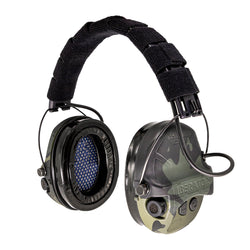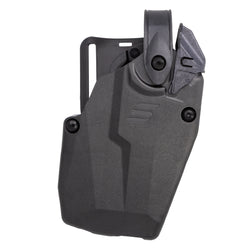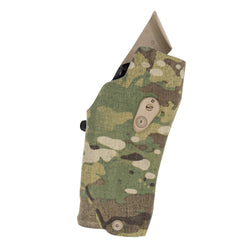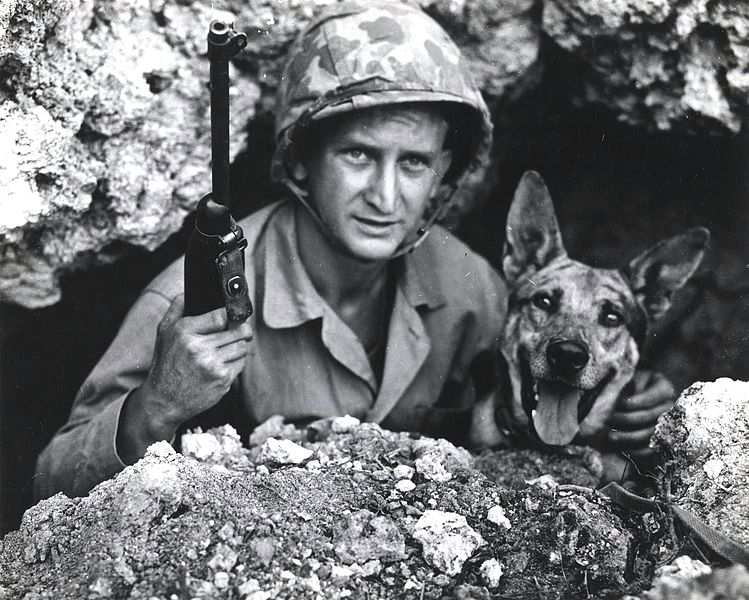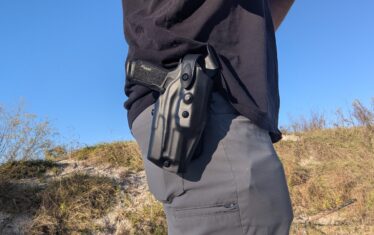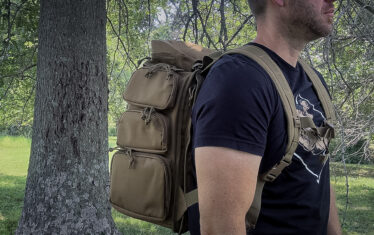When the Japanese attacked Pearl Harbor on December 7, 1941, the U.S. military only used K9 sled dogs in Arctic regions. That would soon change. The military enlisted the help of the American Kennel Association and the Dogs for Defense organization to launch a campaign asking Americans to donate their pet dogs to the Army’s Quartermaster Corps.
On March 13, 1942, the US Army officially launched its War Dog Program. For the first time in U.S. military history, thousands of dogs were recruited and trained for war as sentries, scouts, mine detection, and messengers. They protected U.S. coastlines and deployed overseas to support troops in both the European and Pacific theaters.
This article is Part 2 of a five-part series on the history of U.S. War Dogs. You can read Part 1, which covers World War I, here.
Dogs for defense
Alene Erlanger, a dog breeder and exhibitor from New York City, believed dogs should be part of the war effort. With help from the American Kennel Club and the Professional Handlers Association, she launched Dogs for Defense (DFD) in January 1942.
DFD struggled to establish a military working dog (MWD) program at first. During March 1942, an experimental program was initiated to provide 200 sentry dogs for the Army. This early effort had mixed results as it involved both civilians and military personnel, and a training syllabus had yet to be created.
Lt. Col. Clifford C. Smith of the Quartermaster Corps spearheaded these first efforts. As chief of the Plant Protection Branch, he was responsible for the security of military installations across the United States and the factories that produced the materials needed for an all-out war effort. It was strongly urged that the use of sentry dogs would be advantageous against any sabotage operations.
On March 13, 1942, the experimental K9 program was approved. The Quartermaster Corps took control, calling the war dog program the “K-9 Corps.” Now, March 13 is recognized as K9 Veterans Day, where we honor those brave K9 service members who have saved so many lives.
A major change took place on July 16, 1942, when Secretary of WarHarold Stimson directed the Quartermaster General to train dogs for scout, patrol, messenger, and mine-detection duties. The program expanded even further, providing dogs for both the Navy and Coast Guard. It should be noted that the Coast Guard maintained the largest contingent of war dogs, more than 1,800, for patrols along the east and west coastlines of the United States during World War II.
Training and Breeds
During World War II, five War Dog Reception and Training Centers were built at:
- Front Royal, Virginia
- Gulfport, Mississippi
- Helena, Montana
- Fort Robinson, Nebraska
- San Carlos, California
The Marines conducted their own training at Camp Lejeune, North Carolina. Of special note: since all Army dog handlers were trained by the Quartermaster Corps, they were not eligible for the Combat Infantry Badge (CIB) even though many participated in combat patrol missions overseas.
When it first started, DFD accepted 32 breeds and crosses. By 1944, this was whittled down to seven breeds: German Shepherd, Doberman Pinscher, Belgian Sheepdog, Collie, Siberian Husky, Malamute, and the Eskimo Dog.
About 40,000 dogs were donated in a two-year period. After a preliminary examination, 18,000 were accepted at training and reception centers. From this group, 8,000 failed exams based on temperament, improper size, or health issues. This undertaking would not have been possible with Quartermaster Corps personnel only and was made manageable through the countless hours of time spent by DFD volunteers.
The War Dog Tattoo
Dogs that were deemed acceptable were tattooed in the left ear with a serial number using the Preston brand system, originally utilized with horses and mules. The system made it possible to tattoo 4,000 dogs with a single letter and a combination of numbers (although the Marines simply numbered their dogs). The practice still carries on today, even though microchips are now inserted in all military working dogs.
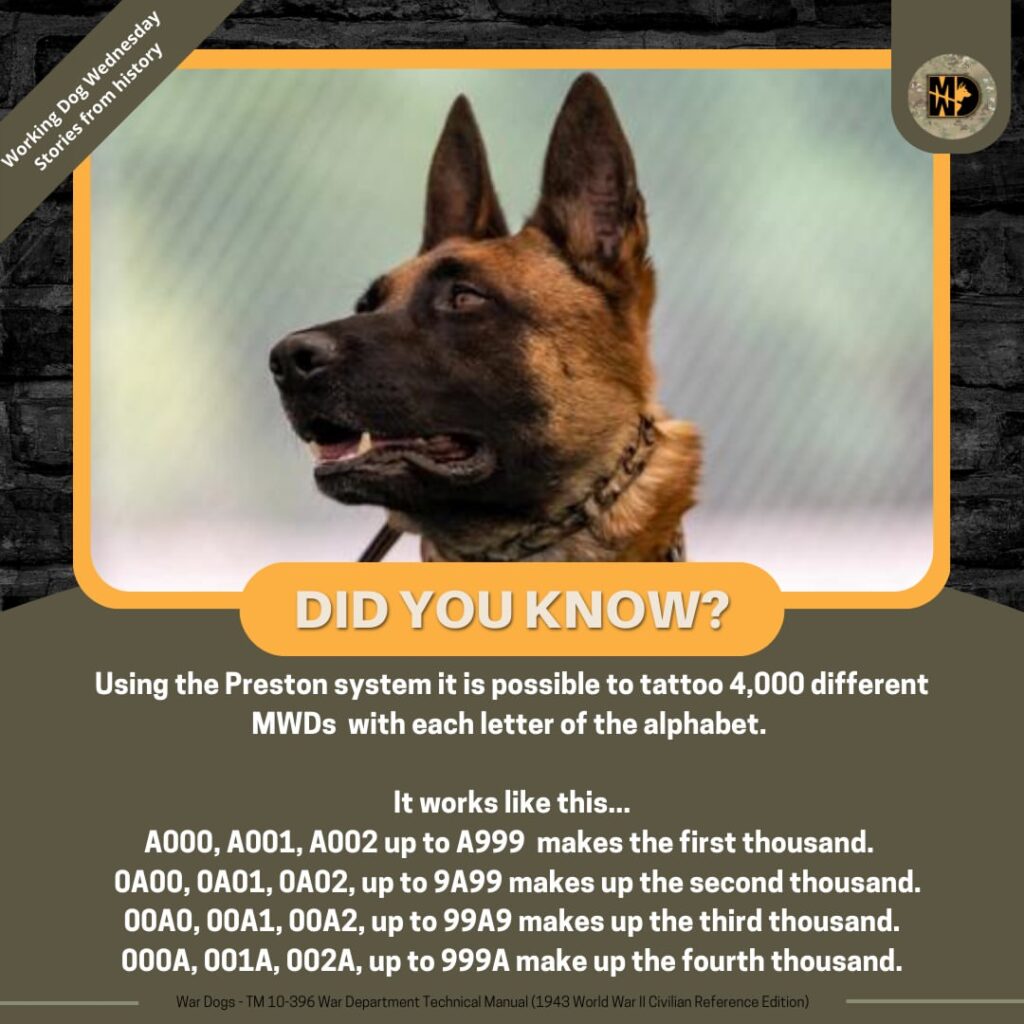
Coast Guard sentry dogs
The Army’s first canine members were trained for domestic sentry duty to counter the threat of German and Japanese submarines off U.S. coasts. There was real concern that saboteurs might be able to gain access to military and important war industry facilities.
That concern became reality shortly after midnight on the morning of June 13, 1942, when four men emerged from a German submarine off the coast of Long Island. After landing in a rubber boat loaded with explosives, their mission was to destroy power plants at Niagara Falls and several Aluminum Company of America (ALCOA) factories in New York, Tennessee, and Illinois.
The plot, known as Operation Pastorius, quickly unraveled when the men were discovered by a Coast Guardsman, leading to the arrest and execution of most of the saboteurs. Although the Army’s sentry dogs were not yet deployed in this case, the incident underscored why canine guards were considered essential for protecting America’s coasts and war industries.
Within a year, more than 1,800 military working dog teams patrolled the coastlines. Sentry patrols covered about two miles of beach, regardless of weather conditions, 24 hours a day. By the end of the war, 3,174 dogs were assigned to the Coast Guard for sentry duties.
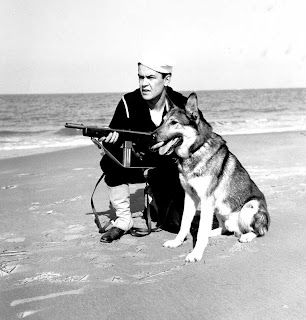
EUROPEAN theater war dogs
One of the War Dogs in Europe also had the distinction of being the only canine to receive decorations for action.
Chips was a German shepherd-husky-collie mix who, along with handler Private John Rowell, was attached to the 30th Infantry, 3rd Infantry Division. On 10 July 1943, the division landed on Sicily, and Chips and Rowell went to work.
As they approached a grass-covered hut, a machine gun opened fire. The hut was, in fact, a camouflaged bunker. Chips quickly escaped Rowell’s control and made a beeline for the bunker. Within seconds, the machine gun fell silent, and an Italian soldier tumbled out with Chips still attached.
In short order, three others exited the bunker with arms raised. Chips was lightly wounded in the incident, suffering powder burns and several cuts.

devil dogs of the Pacific
Unlike the other K9 training programs of the Army, Navy, and Coast Guard, the Marine Corps war dogs were trained exclusively for combat roles. Being a strictly combat organization, the Corps had no interest in training dogs unless they contributed directly to killing the enemy or saving Marines.
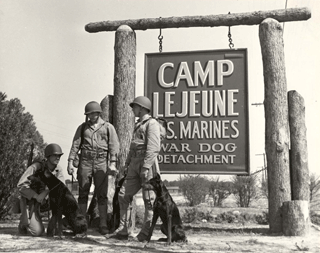
In the early days of the war dog training program, Doberman Pinschers were held in high regard. Their short hair was believed to be more adaptable to the heat of the tropics, and their keen senses and athletic ability made them excellent scout and messenger dogs. Moreover, the Marine Corps received the largest portion of donated dogs from the Doberman Pinscher Club of America.
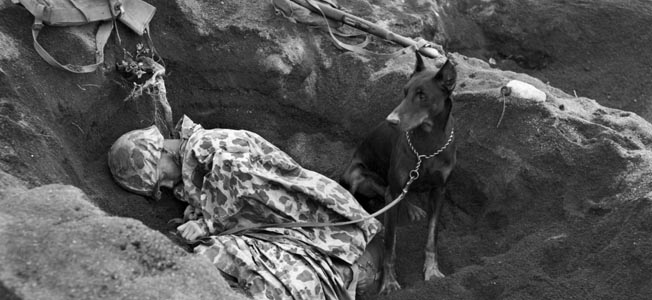
In Guam alone, of the 60 dogs that landed on the island, 25 were Killed In Action. One War Dog that stands out is Cappy, a Doberman Pincher credited with saving the lives of 250 Marines.
By using his sense of smell, he detected and warned of the Japanese enemy soldiers coming. Unfortunately, Cappy and his handler, PFC Allen Jacobson, were injured by a grenade. It’s said that his handler refused medical treatment until his dog was first evacuated.
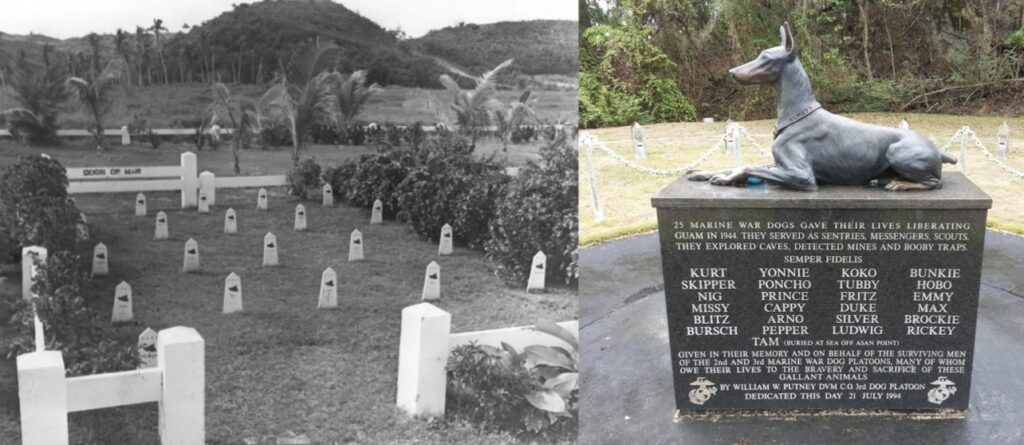
The National War Dog Cemetery is unique as a war dog memorial because the burial plots surrounding the monument contain the actual remains of the dogs that lost their lives in service during the Battle of Guam. It is also the first official military war dog memorial. Its dedication in 1994 started a trend in honoring service animals across the country.
The impact these K9s made was not only on the battlefield but also on the entertainment industry. The film, WALKING POINT: A Marine is always faithful. So is man’s best friend centers around a young Marine, Private Markle, and his donated canine companion, the heroic Duke. Private Markle struggles to fulfil two promises he made before being shipped off to the Pacific.
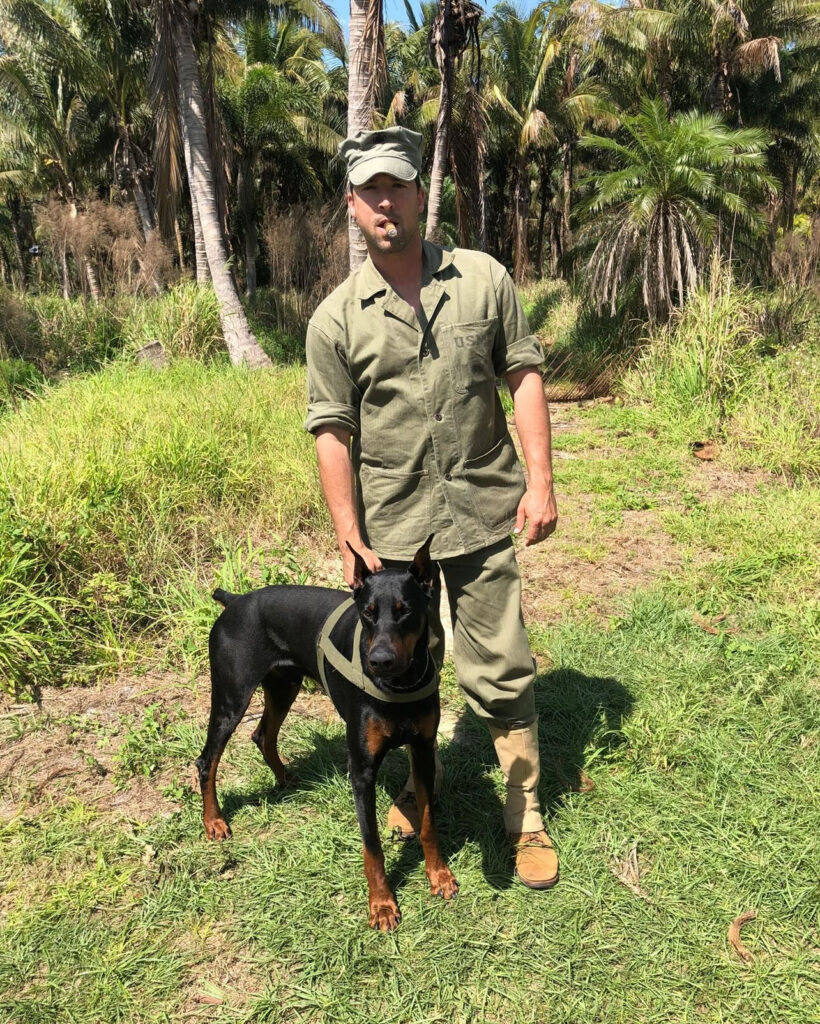
Heading into a new Era
As World War II ended, America entered a new era of global conflict—and once again, military working dogs would be called into action to protect U.S. Service Members’ lives. However, the treatment these dogs would receive was less than desirable.
Take a moment and remember the brave sacrifices of all of our War Dogs that have paid the ultimate sacrifice.
Coming up in Part 3 of this series: History of the War Dogs: Cold War.


